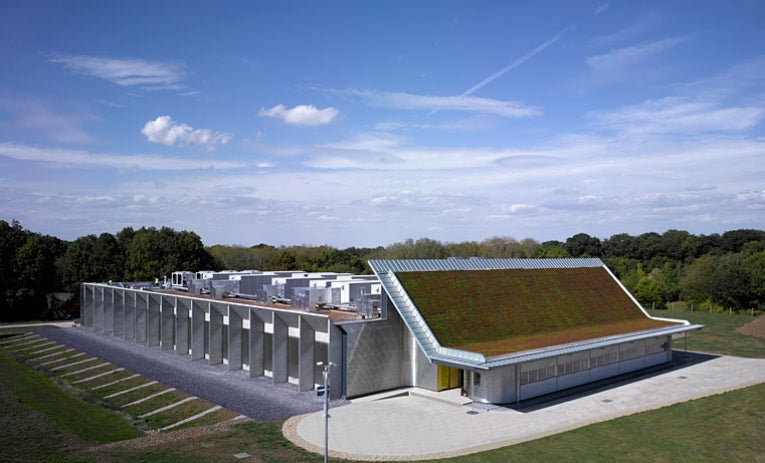Film can be dangerous. Not just dangerous as a cultural artifact that changes society - like the 1968 uprising in Paris, which started at the Cinematheque, but actually dangerous as in bursts into flame. Large amounts of film created up until the 1950s used a nitrate-based material which is very inflammable, and once ignited, nearly impossible to put out. This was replaced by "safety film" in the 1950s, and more recently with polyester-based plastics. However all types of film are susceptible to aging and decay. If they become too damaged to project, the images are lost forever.
How to preserve the UK's priceless film heritage has been a concern for the British Film Institute (BFI) for many years. The devastating potential of nitrate film fires (as Quentin Tarantino used in the climax of his movie Inglourious Basterds) has meant that some films were too dangerous to be even viewed. The costs of copying thousands of cans of this material onto safe filmstock would be prohibitive.

So a detailed specification was created. The £9 million ($14.7 million) result - called the Master Film Store - is a cold, dry fridge, which keeps the film at -5°C and 35% relative humidity in an extraordinary ecologically-sustainable building which seems like it would be a suitable lair for a Bond supervillain. The nitrate film is stored in a series of fire-proof cells, with huge stainless steel blast doors designed to vent any fire and toxic fumes outwards without them spreading to the rest of the store. Although the BFI and architects Edward Cullinan view the likelihood of fire as very remote indeed. The building also contains other larger cells to store later, non-flammable film stock in ideal preservation conditions.

Environmental sustainability and low energy costs were also a major driver of the project. This has resulted in a building which is beautiful, environmentally sound, and designed to keep up to 460,000 cans of film safe for 50 or more years in over 27 km (17 miles) of shelving. The Master Film Store is expected to set a benchmark for the preservation of film and also receive a BREEAM Excellent Rating, which is the world-class code for sustainability awarded by the UK's Building Research Establishment.

David Leggett, the project archiect for Edward Cullinan, is justifiably proud of the Master Film Store. He says, "The design team at the beginning of the project knew very little of the properties of nitrate film, we had a daunting learning curve to climb. This turned out to be a rewarding challenge, it introduced fresh thinking by not restraining us to conventional solutions, and resulted in a unique design that now sets a new template."

The challenges included more than just how to store film safely. Wildlife, including greater crested newts, badgers and bats had to be moved to new homes nearby, and a green roof had to be installed with a layer of growing plants so that the building area will have pretty much the biodiversity footprint of the meadow it supplanted!
The film store is due to open on 5th September, and be filled with material held elsewhere on the Gaydon, Warwickshire site, and also from other BFI vaults. It was funded by the UK government's Department of Culture, Media and Sport. The project has been 4 years in planning, although the build itself only took 18 months.
David Leggett says, "The project has been amazing to work on. The design team have worked incredibly well together, and we have had a fantastic client who laid down the challenges and supported our designs. This building is essential in protecting the nation's film heritage for future generations. As an architect, it is a privilege to work on a building that will still be standing beyond my lifetime."
Links:
Top Photo: BFI Master Film Store by Edmund Sumner © BFI










